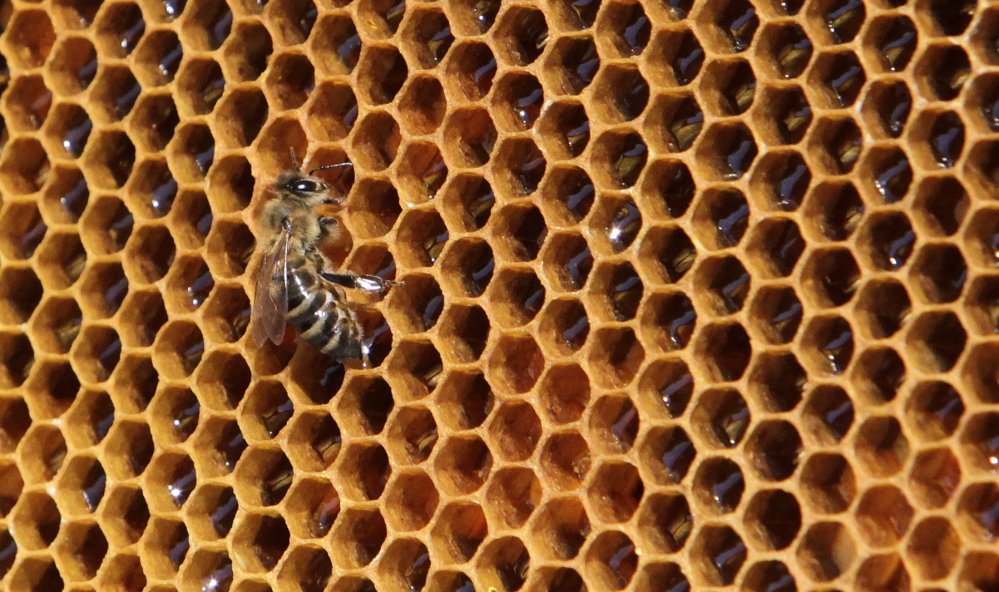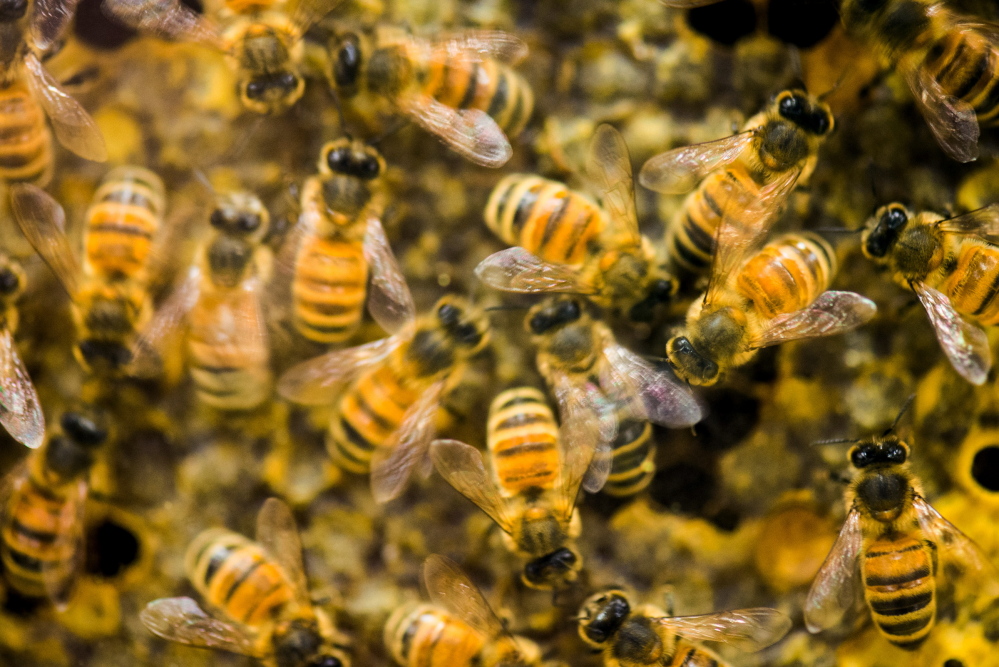WASHINGTON — The Obama administration hopes to save the bees by feeding them better.
A new federal plan aims to reverse America’s declining honeybee and monarch butterfly populations by making millions of acres of federal land more bee-friendly, spending millions of dollars more on research and considering the use of fewer pesticides.
While putting different type of landscapes along highways, federal housing projects and elsewhere may not sound like much in terms of action, several bee scientists told The Associated Press that this a huge move. They say it may help pollinators that are starving because so much of the American landscape has been converted to lawns and corn that don’t provide foraging areas for bees.
“This is the first time I’ve seen addressed the issue that there’s nothing for pollinators to eat,” said University of Illinois entomologist May Berenbaum, who buttonholed President Obama about bees when she received her National Medal of Science award last November. “I think it’s brilliant.”
Environmental activists who wanted a ban on a much-criticized class of pesticide said the Obama administration’s bee strategy falls way short of what’s needed to save the hives.
Scientists say bees – crucial to pollinate many crops – have been hurt by a combination of declining nutrition, mites, disease, and pesticides. The federal plan is an “all hands on deck” strategy that calls on everyone from federal bureaucrats to citizens to do what they can to save bees, which provide more than $15 billion in value to the U.S. economy, according to White House science adviser John Holdren.
“Pollinators are struggling,” Holdren said in a blog post, citing a new federal survey that found beekeepers lost more than 40 percent of their colonies last year, although they later recovered by dividing surviving hives. He also said the number of monarch butterflies that spend the winter in Mexico’s forests is down by 90 percent or more over the past two decades, so the U.S. government is working with Mexico to expand monarch habitat in the southern part of that country.
The plan calls for restoring 7 million acres of bee habitat in the next five years. Numerous federal agencies will have to find ways to grow plants on federal lands that are more varied and better for bees to eat because scientists have worried that large land tracts that grow only one crop have hurt bee nutrition.
The plan is not just for the Department of Interior, which has vast areas of land under its control. Agencies that wouldn’t normally be thought of, such as Housing and Urban Development and the Department of Transportation, will have to include bee-friendly landscaping on their properties and in grant-making.
That part of the bee plan got praise from scientists who study bees.
“Here, we can do a lot for bees, and other pollinators,” University of Maryland entomology professor Dennis van Englesdorp, who led the federal bee study that found last year’s large loss. “This I think is something to get excited and hopeful about. There is really only one hope for bees and it’s to make sure they spend a good part of the year in safe healthy environments. The apparent scarcity of these areas is what’s worrying. This could change that.”
University of Montana bee expert Jerry Bromenshenk said the effort shows the federal government finally recognizes that land use is key with bees.
“From my perspective, it’s a wake-up call,” Bromenshenk wrote in an email. “Pollinators need safe havens, with adequate quantities of high-quality resources for food and habitat, relatively free from toxic chemicals, and that includes pollutants as well as pesticides and other agricultural chemicals.”
Send questions/comments to the editors.




Success. Please wait for the page to reload. If the page does not reload within 5 seconds, please refresh the page.
Enter your email and password to access comments.
Hi, to comment on stories you must . This profile is in addition to your subscription and website login.
Already have a commenting profile? .
Invalid username/password.
Please check your email to confirm and complete your registration.
Only subscribers are eligible to post comments. Please subscribe or login first for digital access. Here’s why.
Use the form below to reset your password. When you've submitted your account email, we will send an email with a reset code.